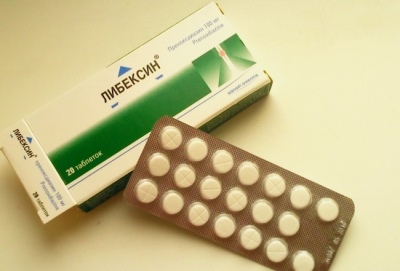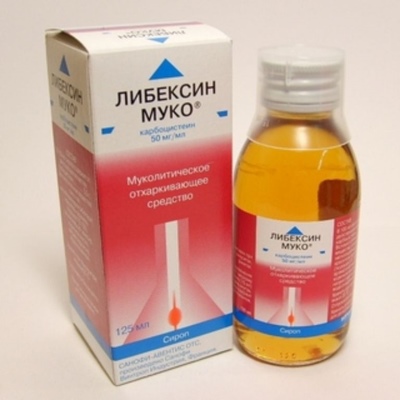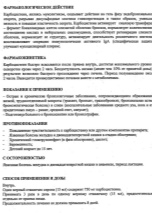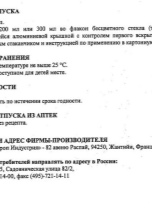Libexin for children: instructions for use
In the treatment of cough in children using different groups of drugs. Some medicines make sputum more liquid and promote its easy coughing. Other agents suppress the cough itself, acting on both the brain and the cough receptors of the bronchi. Libexin is a prominent antitussive drug. How exactly does it help in treating cough and is it used in children?

Release form and composition
Libexin is made in the form of tablets, which have a round, almost white color, on one side there is an inscription LIBEXIN, and on the other there are risks according to which each tablet can be divided into quarters. One pack includes 20 tablets packed in one blister.
The active ingredient in this preparation is prenoxdiazine in the form of hydrochloride. One tablet of Libexin contains 100 mg of such a compound. In addition to it, talc, lactose, glycerin, povidone, corn starch and magnesium stearate are present in the medication.
Separately produce a drug called Libeksin Muko. It is represented by syrup in two dosages, for children and adults. The main component of this sweet medicine is carbocysteine. In syrup for children, its dosage is 100 mg per 5 ml (20 mg in each milliliter). This medication is prescribed to children from the age of two.
In the “adult” syrup, not only is the dosage of the active ingredient higher (50 mg / 1 ml), but ethyl alcohol is also present. For this reason, this drug is not used to treat children under 15 years of age.
Operating principle
In prenoxydiazine, an antitussive effect is noted, which is not central (the drug does not act on the brain), but peripheral. It is associated with such effects from taking Libexin:
- Reducing the irritability of cough receptors located in the respiratory tract, due to the anesthetic effect (local).
- Inhibition of stretch receptors in the bronchi, which are involved in the cough reflex, resulting in expansion of the bronchi.
- Some decrease in the activity of the respiratory center, in which no respiratory depression occurs.
The strength of the antitussive effect of the drug is comparable with the drugs of codeine, but does not provoke drug dependence. In addition, if the patient has a chronic inflammatory process in the bronchi, Libexin has an anti-inflammatory effect.

Indications
Libexin is used for non-productive cough, the cause of which is:
- Pharyngitis.
- Flu.
- Acute bronchitis.
- Tracheitis.
- Pneumonia.
- Laryngitis.
- Emphysema.
- Whooping cough.
- Heart failure.
- Tuberculosis.
- Chronical bronchitis.
The medicine is also given to children who are about to undergo a bronchographic study or bronchoscopy. With this use, Libexin has a local anesthetic effect, promotes the expansion of the bronchi and suppresses the cough reflex, making the procedure more complete.
At what age is it allowed to take?
The instructions for Libexin do not indicate any age restrictions, but there is information that this remedy is prescribed for children with caution.
Contraindications
Libexin is not prescribed if the child has:
- There is a large amount of sputum (wet cough).
- There was inhalation anesthesia.
- There is intolerance to any drug ingredient, as well as galactose.
- There is a shortage of lactase.
Side effects
- Sometimes during treatment with Libexin, a child develops an allergic reaction in the form of angioedema or a skin rash.
- The digestive system of a small patient may react to tablets with dryness in the throat or mouth, as well as temporary numbness of the oral mucosa. Occasionally, medication causes pain in the stomach, provokes constipation or nausea.
- If high doses are used, treatment with Libexin may increase fatigue and provoke unexpressed sedation.
Instructions for use
- Dividing the Libexin pill by risks, the right amount of the drug is offered to the child to swallow and drink it with water. Chewing medication is not recommended because it may cause anesthesia of the oral mucosa.
- The dosage of the medicine for children is determined by both the body weight of the small patient and his age. Calculate the dose for a particular patient should the attending physician. On average, a child is prescribed 1/4 tablet (25 mg) or 1/2 tablet (50 mg) per dose.
- The medication is often given to children three times a day, but sometimes the pediatrician prescribes four times the use.
- The maximum dose for a single dose in childhood is 50 mg of prenoxdiazine, which corresponds to half a tablet. Children should not take more than two tablets per day (200 mg of active compound) per day.
Overdose
An excessively high dose of the drug can cause a strong sedation and weakness, but there have been no cases of overdose of tablets before this time.
Compatibility with other drugs
If a child has a strong dry cough, the drug is often combined with antispasmodics (No-shpa, Drotaverinum, Papaverine). Do not prescribe Libexin with expectorant drugs or mucolytics, since this combination of drugs will make it difficult to eliminate liquefied sputum.
There is no information about the interaction of the drug with other drugs.
Terms of sale
You do not need a doctor's prescription for buying Libexin at a pharmacy, but it is not recommended to buy medicine for a child without prior consultation with a pediatrician, pulmonologist, ENT, or other specialist.
The average price of one pack of tablets is 450 p.
Storage conditions and shelf life
Libexin's shelf life is 5 years. In order for the tablets not to lose their medicinal properties, they should be kept at home in a dry place at a temperature not exceeding +25 degrees Celsius. Children should not have access to the drug.
Reviews
There are many positive reviews about the use of Libexin in children with a strong dry cough. They note the high efficacy of the remedy and a quick therapeutic effect with an obsessive and painful cough. The size of the tablets is small, so the problems with swallowing are not observed in the majority of small patients.
To divide the drug into halves or quarters, according to moms, is quite easy. As for the cost of tablets, some parents call it high, while others - acceptable.
Analogs
If for one reason or another it is impossible to give Libexin to the child, this remedy may be replaced by another antitussive medicine, for example:
- Drug Codelac Neo. Such an agent based on butamirate is available in drops (allowed from 2 months of age), syrup (prescribed at the age of 3 years and older) and tablets (not given to children). The drug affects the cough center, which leads to the suppression of the cough reflex, therefore it is especially in demand for a painful dry cough. At the same time, unlike the Codelak tablet or Codelak Fito elixir, it does not include codeine, therefore it is not addictive and does not depress respiration.
- Syrup Bronholitin. As part of this drug combined glaucine and ephedrine. Such substances affect the cough reflex, and also eliminate swelling of the mucous membrane, stimulate respiration and expand the bronchi. In childhood, the drug is used from 3 years. Analogues of this drug with the same composition are Bronchoton and Bronhotsin syrups.
- Paxeladine Syrup Such a drug based on okseladin has the ability to act on the cough center, but it does not slow down breathing, but on the contrary, stimulates it. At children's age, he is appointed from 2.5 years old with a child’s body weight above 15 kg.
- Syrup Sinekod. This vanilla-flavored medication contains butamirate and is also available in drops that are allowed from two months of age. Synekod in syrup is used for dry cough from 3 years.
Despite the high efficacy of modern cough medicine, many parents tend to advocate traditional medicine and prefer to treat their children with “grandmother's” methods.
In the next video you can see how to quickly and effectively cure a child’s cough with the help of traditional medicine.





























